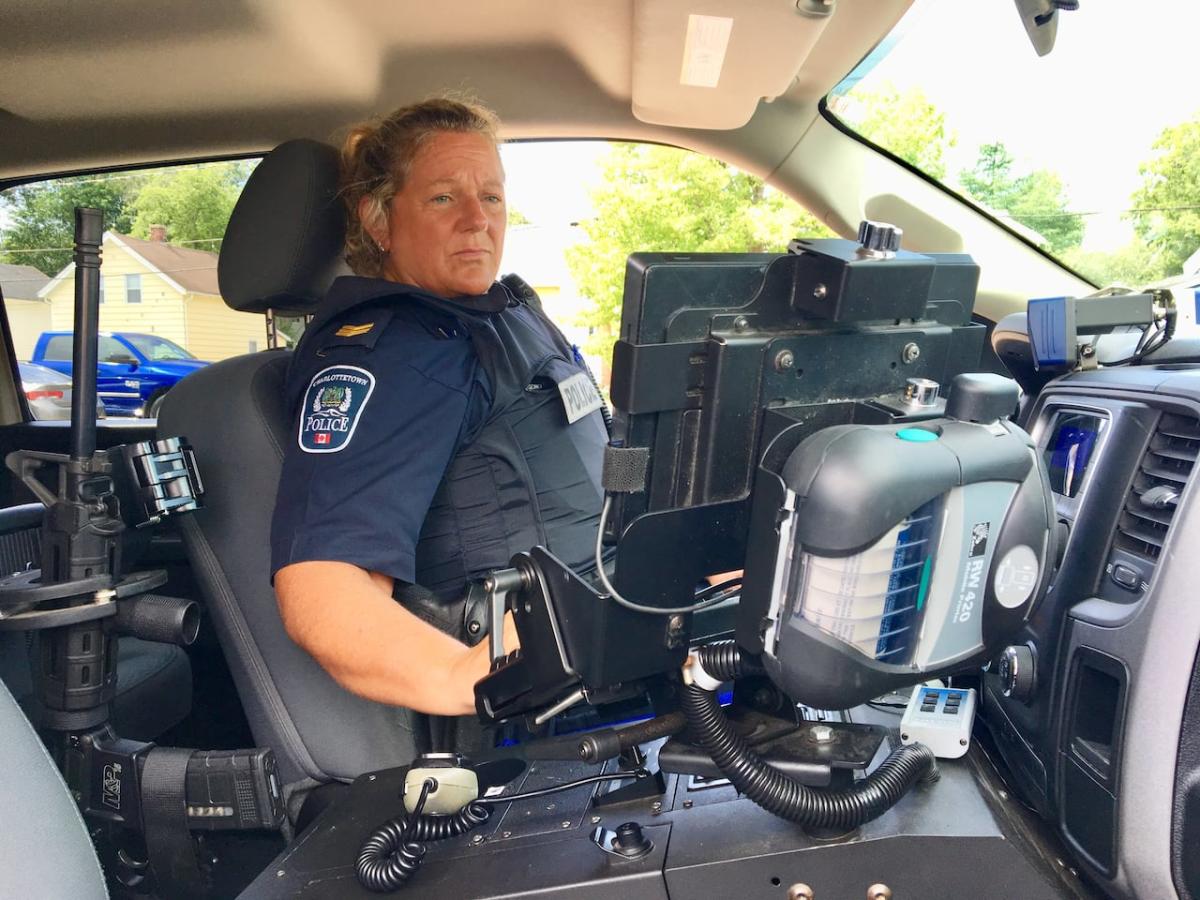As crime rates rise on Prince Edward Island, the number of police per capita in the province has fallen, and while some see that as a problem, it’s unlikely the two are directly connected.
The actual number of police officers on the Island has increased, as has the number of authorized policing positions, but neither figure has kept up with population growth.
In 2017, Statistics Canada counted 222 police officers on P.E.I. with 16 positions vacant. In 2023, there were 231 officers and 22 vacant positions, a four per cent increase. In the meantime, the population grew by 16 per cent.
As a result the number of police officers per 100,000 population on the Island fell from 148.3 to 132.9.
Statistics Canada records going back to 1986 show that no province or territory has ever had a policing ratio that low. This has not escaped the notice of RCMP on the Island.
“At the moment, our numbers are low,” RCMP Sgt. Shaun Coady acknowledged in an interview last month about rising crime rates.
“More police for more population is certainly valuable. It allows us to do more education, more enforcement — just have a more overall police presence, which can hopefully reduce the crime amount.”

RCMP Sgt. Shaun Coady would like to see policing numbers go back up again. (CBC)
The P.E.I. government says it has been working to keep up with population growth when it comes to law enforcement.
“Since 2019, the provincial government has worked with federal and municipal partners to invest over $4.5 million into both local municipal forces and RCMP, which has resulted in over 35 new police officer positions,” the Department of Justice said in an email to CBC News.
“Government will continue to work with municipalities, municipal and RCMP forces as well as all other public safety partners to ensure that communities’ needs are met across P.E.I., and that public safety for residents remains a top priority.”
‘Biggest myth ever sold’
Rising crime rates are often followed by calls for more police on the streets, but a criminologist at Wilfred Laurier University said there is little evidence that strategy works.
“The biggest myth ever sold is that the police prevent crime,” Prof. Tarah Hodgkinson said in an interview. “They do respond to crime, absolutely, but they don’t prevent it.”


Policing numbers can have an impact on crime clearance rates, says Tarah Hodgkinson. (Submitted by Tarah Hodgkinson)
Quite a bit of research has been done by criminologists on this question, she said, but none has been able to clearly link police numbers with crime prevention.
Whatever theoretical link there might once have been between the two has grown much weaker as the nature of crime changes in the 21st century.
Since 2021, Prince Edward Islanders have been more likely to be victims of fraud than of common assault, and the perpetrators of most of those frauds do not live on P.E.I. From all over the world, they are attacking Islanders in their homes through their phones and computers.
Extortion, also largely perpetrated by people offshore, has grown from a handful of incidents a year to close to 100 in 2023. More police officers on P.E.I. are not going to deter those criminals.


Fraud, often occurring over the internet, has become more common than Level 1 assaults on P.E.I. (Shutterstock)
But Hodgkinson noted that police do respond to these crimes when they happen with the goal of bringing perpetrators to justice, and there may be a connection between fewer officers and falling clearance rates — that is, the number of reported incidents that reach a satisfactory conclusion.
“If we don’t have enough people to deal with those issues, then we’ll have lower solve rates,” said Hodgkinson, adding that investigators need a different kind of training to crack a case.
Clearance rates for fraud, extortion, criminal harassment, indecent communications, and uttering threats have been cut in half since 2017.
But clearance rates for crimes on the street, such as minor thefts and common assault, are also falling at a lesser rate, and policing levels may play a part there.
These lower clearance rates are not unprecedented. Clearance rates for assault were equally low in the early years of the century, a time when that kind of crime was more frequent.
Summerside bucks trend
While the province as a whole has not kept up with population growth, the City of Summerside has actually increased its police-per-population ratio.
In 2017, the city had 29 sworn officers, not including the chief and deputy chief, and six of them worked part-time. It now has 36 officers, up 24 per cent, and the six part-time officers are full-time. In addition, Summerside has hired bylaw officers to give city police more time to focus on criminal offences and traffic safety.


Summerside policing numbers have more than kept up with population growth. (Nicole Williams/CBC )
Over that same time period, the city’s population grew 15 per cent.
Summerside has been able to grow its police service in a challenging environment, said Hodgkinson.
“Recruitment and retention in policing across Canada is at an all-time low,” she said. “Folks are really having an issue recruiting people and bringing them in and actually keeping them.”


Summerside is in the process of gathering data to determine how effective its decisions on policing are, says J. P. Desrosiers. (City of Summerside)
J. P. Desrosiers, the city’s deputy CAO, said the city has been trying to keep up with population growth through steady investments every year, and keeping the force strong rather than trying to play catch-up is part of the recruitment and retention strategy.
“When officers are looking at choosing a force to join, seeing one that’s well equipped — not only with equipment but with resources at the staff level — will make for a much more enjoyable and balanced work environment.”
The city has also launched a new initiative to get a firmer grasp on what it is getting in return for those investments.
It has hired a researcher from Dalhousie University to examine crime in the city both statistically — what crimes are being committed, how fast police solve them and who is committing them — and qualitatively by interviewing residents caught up in crime.
This will let the city make more informed decisions about how to deploy police resources, and what further investments may be required.

